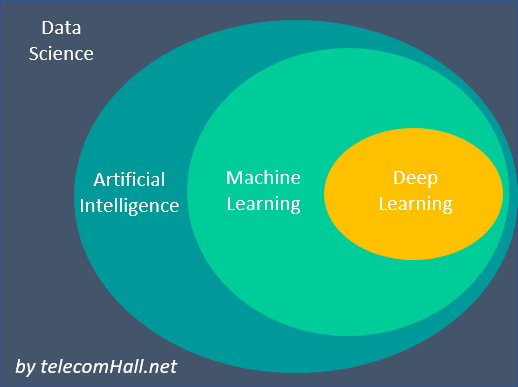Introduction
If you are a telecomHall Community member, you probably have heard about Data Science. And Python.

And of course, you probably also have an idea of what it means. Especially if you have already worked with Excel manipulating any type of data, even a very simple data. Even more if you have already created a Macro in Excel (or any other application in the Microsoft Office suite) - even if it was a “recorded” Macro.![]()
In addition to knowing its meaning, for sure you also know that it is a very important area, and that more and more professionals are specializing on it.
The concepts, languages, algorithms, applications and everything else related to Data Science are huge, and perhaps for this reason it becomes so hard to just “get started”. It is really very easy to “get lost”, and end up “giving up” before you actually to start. ![]()
For this reason, *we decided to create learning “steps” mainly for beginners, so that we can evolve/grow together in this amazing new World!. ![]()
Of course: there are countless (really many) learning options for Data Science. But let’s try to share here, in a very simple way, the first steps needed and try to clear the main doubts that always arise for those who are starting.
The engine behind Data Science is a powerful Programming Language, that is the top choice for data scientists and developers; a language that enable us to achieve more in less time; be versatile and easy to understand, and be powerful too; also it needs to be scalable and can work in any environment easily; and finally that, with minimal changes can be run on any operating system and can be integrated with other programming languages.
Considering all alternatives above we have chosen Python! ![]()
Why Python?
There are many programming languages used by data scientists like Python, R, C++.
Next, let’s highlight some main Python features that make it easier to see why Python is the most popular language used by data scientist (and recently by almost all Telecom Engineers).
- Python: Programming language
- First introduced: 1980.
- Officially launched: in 1989 as a full-fledged programming language (after constant improvements and updates).
- Created by: by Guido Van Rossum.
- Open Source: can be used for commercial purpose.
- Main Goal: to keep the code easier to use and understand.
- Learning Complexity: easy to learn and use. It is developer-friendly and high level programming language.
- Object-oriented: supports object oriented language and concepts of classes and objects appears.
- Open source: freely available (including source-code) at offical web address.
- Typing: Dynamically typed language, so the variables are defined automatically.
- Readability: more readable and uses lesser code to perform the same task as compared to other programming languages (more understandable and readable).
- Strongly typed: developers have to cast types manually.
- Interpreted: the program don not need to be compiled. It executes the code line by line at a time, making debugging easy and thus suitable for beginners.
- Flexible: portable, can easily run on any platform easily. Cross-platform Language that can run equally on different platforms such as Windows, Linux, Unix and Macintosh etc.
- Scalable
- GUI: Graphical user interfaces can be developed with Python. (Note: the GUI to write Python code can vary a lot, from a simple Notepad to more enhanced apps; but we will talk about it in near future).
- Other languages: can be easily integrated with languages like C, C++, JAVA etc.
- Third-party softwares: can be easily integrated.
- Library: is huge and enables Data Scientists to work faster with the ready to use tools.
- Packages: several available to help data scientists to develop their algorithms.
- Community: huge community base to aks and answer queries from developers and data scientists, with rich set of module and functions shared.
From all the above Python Features and Concepts listed above, one may have called your attention: Python is easy to learn and use! ![]()
Well, if you reading this tutorial, maybe this is not exactly “true” for you. But keep in mind that when we say it’s easy to learn and use we are comparing it to other languages.
Of course if this is the first Python “contact” you’re having, you will not find it so easy.
But, the learning curve is. In other words, if you happen to start, and take your first steps, you will probably agree that is indeed easy to learn and use.
Will it be only Python? 
No. Just because we prefer Python doesn’t mean we won’t be using other languages.
On the contrary, we will use it, and a lot! Do not worry.
telecomHall Scenario
In our scenario, let’s consider a Computer with Windows 10 Operating System. And as a Programming Language, we will use Python. Bearing in mind, of course, Data Science is not limited to a Language, Operating System or any other scope.
This tutorial here will serve as an “Index”, a reference point with the first steps (tutorials) with the basic information you need to know to continue learning Data Science & Python. And you can always come back here when you have any doubt.
So, let’s start. (The number of following steps - tutorials - will increase as we keep learning together!)
Conclusion
Today we saw a brief introduction to Data Science and Python. Follow us on this journey, and you will be amazed. ![]()
Index
Back to main index: Data Science by telecomHall Community